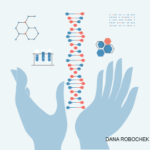CHICAGO—Not long ago, somatic mutations were recognized almost exclusively as the cause of malignant conditions. This created an intellectual atmosphere in which rheumatologists felt they need not concern themselves too much with the subject of somatic mutations when thinking about autoinflammatory and autoimmune diseases. However, the discovery of VEXAS (vacuoles, E1 enzyme, X-linked, autoinflammatory, somatic) syndrome in 2020 shifted this paradigm, and the conversations happening now about genetics and rheumatology are immensely thought-provoking.1 At ACR Convergence 2025, the session Somatic Mutations in “Benign” Disease: What Every Rheumatologist Should Know explored this relatively new and exciting topic.
The first speaker was David Beck, MD, PhD, assistant professor in the Department of Medicine and the Department of Biochemistry and Molecular Pharmacology, New York University (NYU) Grossman School of Medicine, New York. Dr. Beck is one of the co-discoverers of VEXAS and has established the NYU Autoimmune and Autoinflammatory Genetic Diseases Program, which is dedicated to identifying new genetic disorders and providing precision therapy for patients with genetic diagnoses. In his talk, Dr. Beck explained that VEXAS, which arises from myeloid-restricted somatic mutations in the UBA1 gene, is now believed to be as common as about one in every 4,000 males older than the age of 50 in the U.S.2 Females can be affected as well, but because the disease is X-linked, the prevalence in females is lower, about one in every 26,000 females in the U.S. older than the age of 50.2
VEXAS Syndrome
Dr. Beck explained that VEXAS is often severe, includes inflammatory and hematologic manifestations and can be quite heterogeneous in its clinical presentation. Patients with VEXAS often meet criteria for other known, well-established conditions, including relapsing polychondritis; vasculitis, such as polyarteritis nodosa or giant cell arteritis (GCA); and rheumatoid arthritis, yet testing for somatic mutations in UBA1 should be considered when patients do not fit neatly into these other diagnostic boxes. The predisposition to hematologic conditions, such as myelodysplastic syndrome (MDS; seen in 30–40% of patients), myeloproliferative neoplasms, plasma cell dyscrasias and recurrent thrombosis, is a common feature of VEXAS and helps distinguish it from other clinical rheumatic syndromes.3
In a systematic review of 720 patients with VEXAS, the most common clinical features of the disease were cutaneous involvement (seen in 82% of patients), such as neutrophilic dermatoses, followed by constitutional symptoms like fevers, weight loss, night sweats and fatigue (69% of patients) and respiratory disease (61% of patients), including pulmonary infiltrates, ground glass opacities and pleural effusions.4



